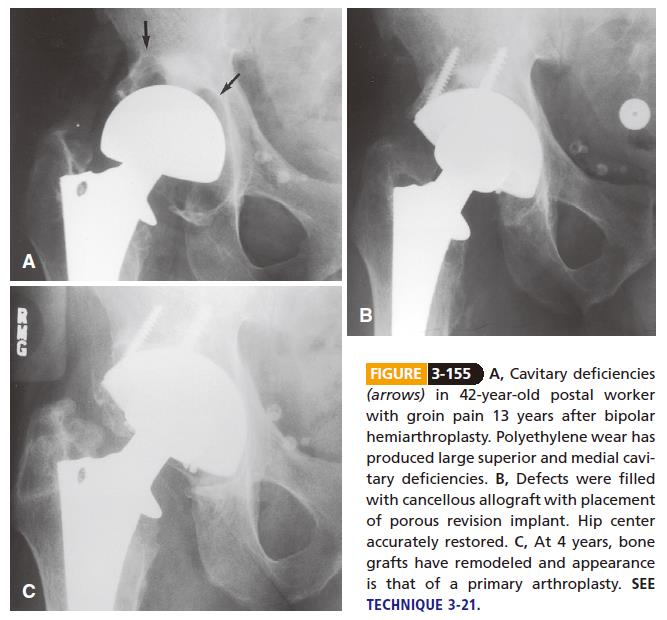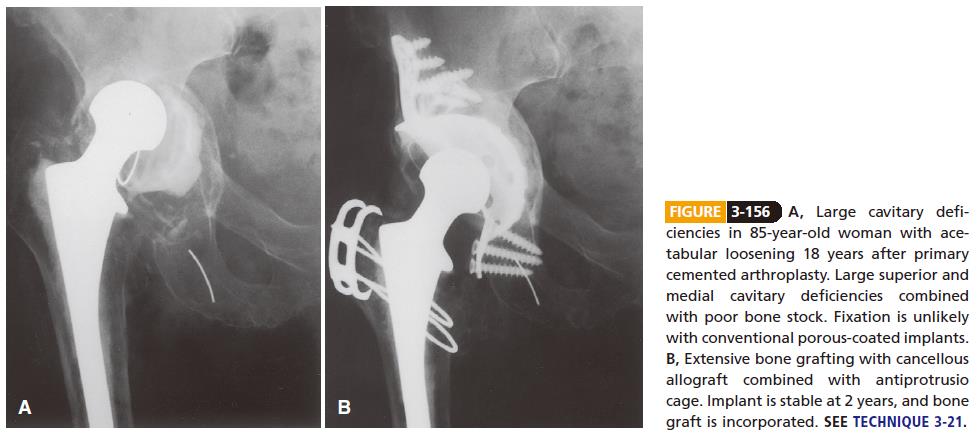Management of acetabular cavitary deficits
 Oct. 12, 2020
Oct. 12, 2020
Management of acetabularcavitary deficits
The objectives of acetabular reconstruction are to (1) restorethe center of rotation of the hip to its anatomical location, (2) establish normal joint mechanics, (3) reestablish the structural integrity of the acetabulum, and (4) obtain initial rigidfixation of bone graft, adequate containment of the new prosthesis, and rigid fixation of the revision prosthesis to host bone. Currently, most acetabular revisions are done with cementless components.

Technique 3-21
■ Cavitary deficiencies are the easiest to manage. If the deficits are very small, ream to a slightly larger size to increase the area of host bone in contact with the implant surface. Insert the revision socket using the same techniques as for primary replacement (see Technique 3-3).
■ If the deficits are larger, significant additional reaming would compromise the rim of the acetabulum and createa segmental deficiency.
■ Fill larger cavitary deficiencies with morselized autogenous or allograft cancellous bone grafts, and impact them into place by using the last-sized reamer, turning in reverse, or by impaction with an acetabular trial componentof the appropriate size. A larger than average componentmay be required (Fig. 3-155).
■ Large superior and central cavitary deficiencies require more extensive bone grafting. Use morselized graft or a solid bulk graft for large defects with additional particulate bone graft to fill any smaller cavitary deficits (Fig.3-156). In either case, use the bone graft only as filler material and not as a structural support for the new implant. The intact peripheral rim of the acetabulum should be able to provide implant stability before theaddition of any bone grafts.
■ Through judicious reaming and careful implant sizing, place as much of the porous surface of the implant as possible against viable host bone. Use an implant oversized 1 to 2 mm to achieve rim fixation, especially if large medial deficits have been grafted.
■ Use ancillary screw fixation if the stability of the implant is in question with press-fit fixation alone.

Note: this article comes from CAMPBELL’S OPERATIVE ORTHOPAEDICS by S. Terry Canale James H. Beaty.













